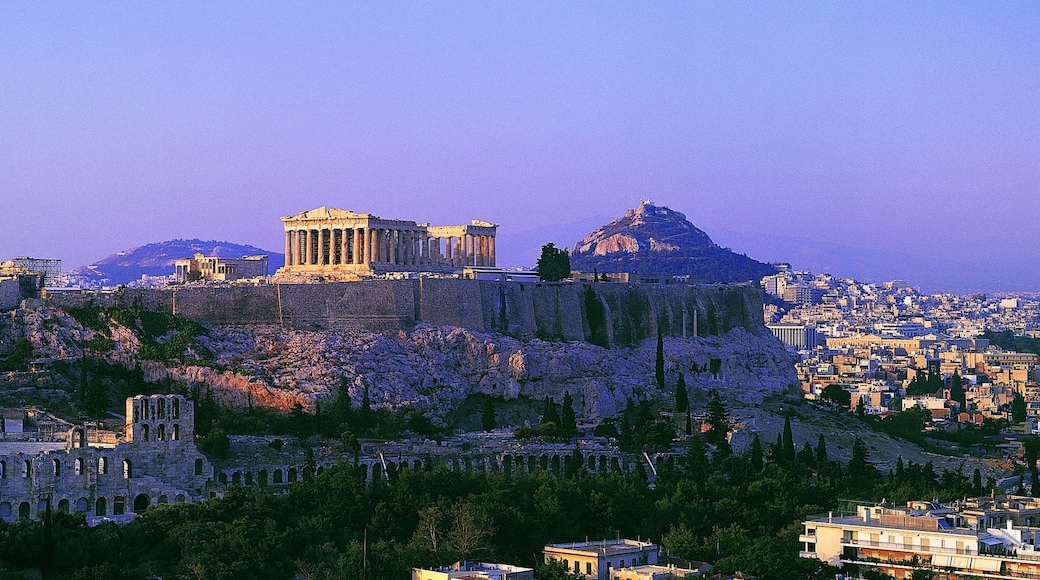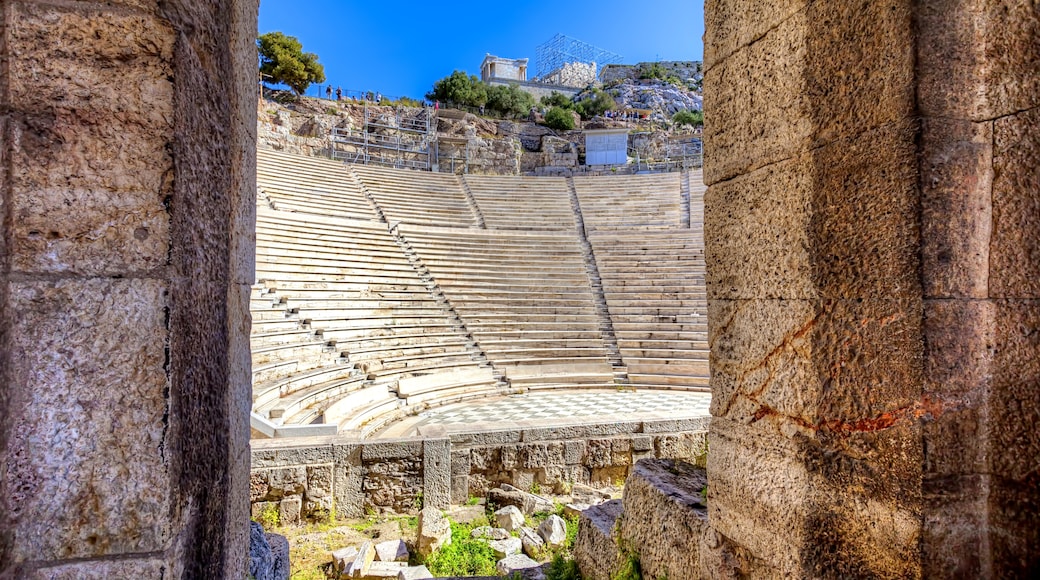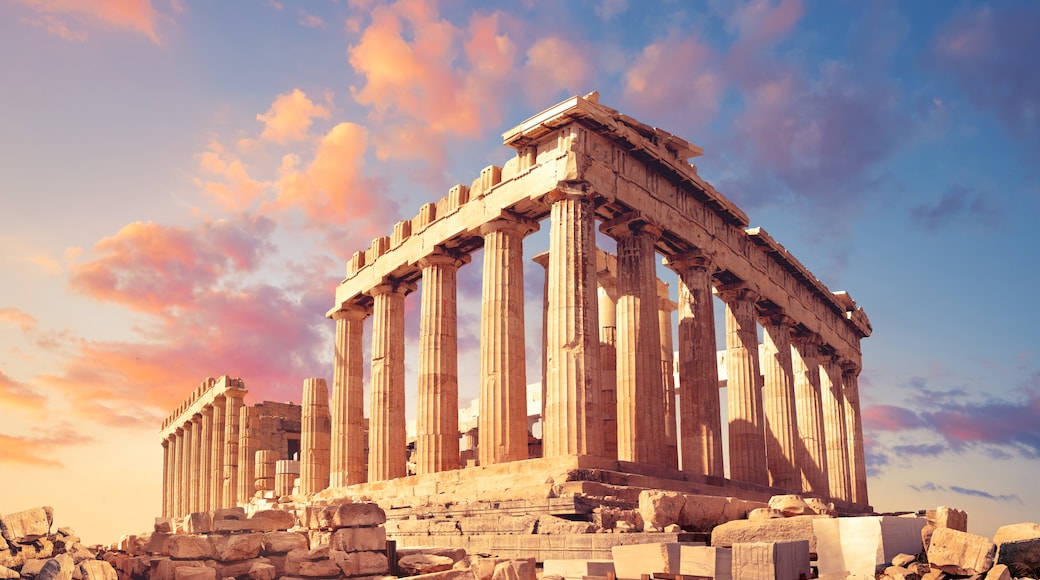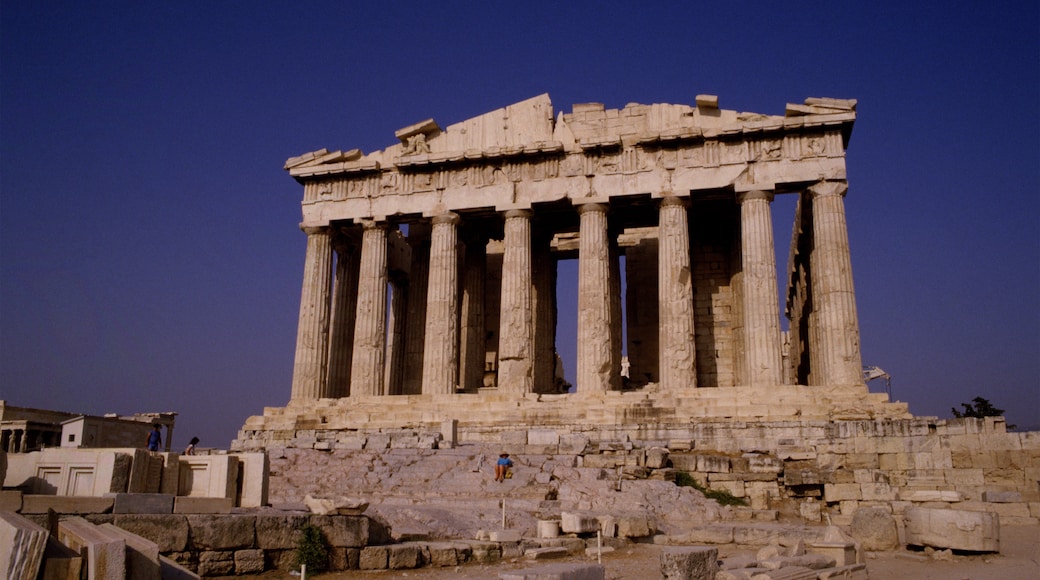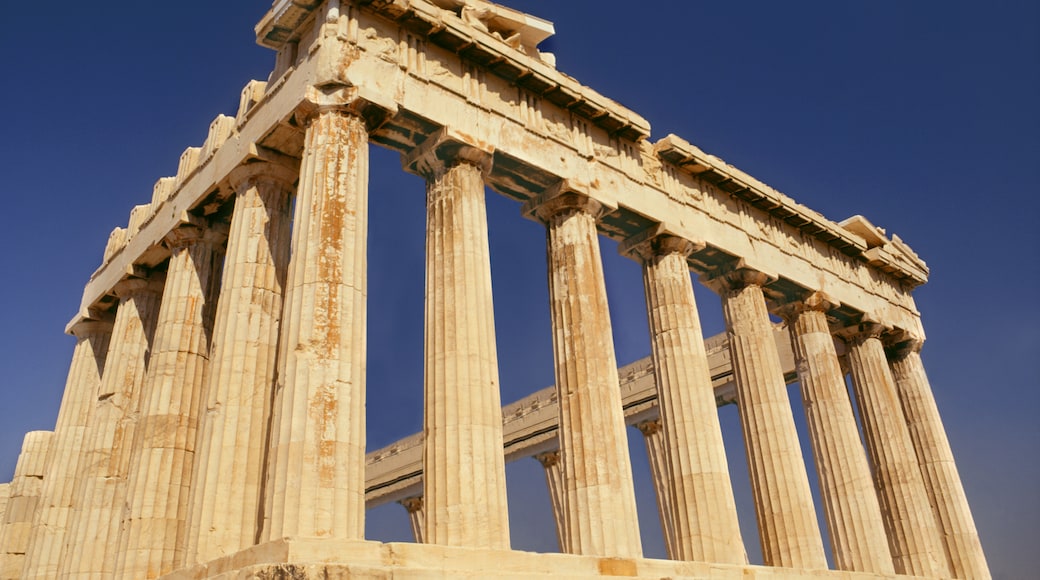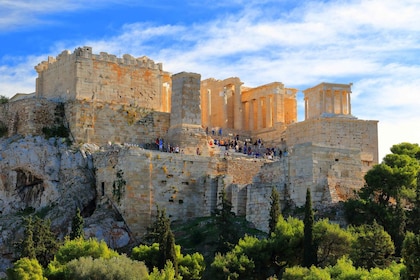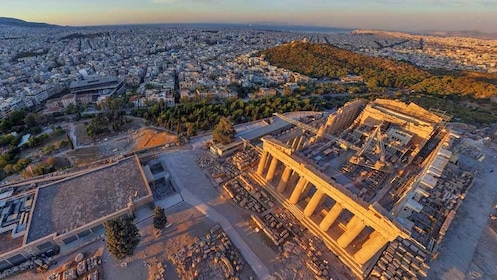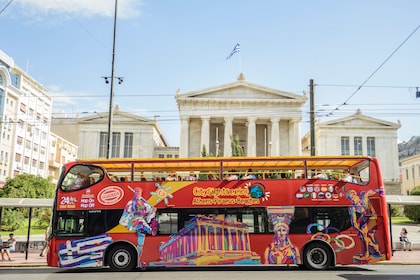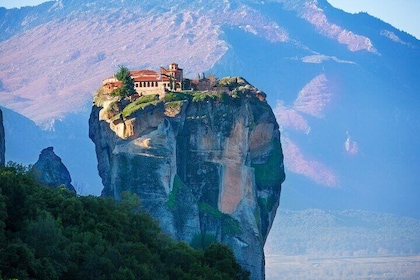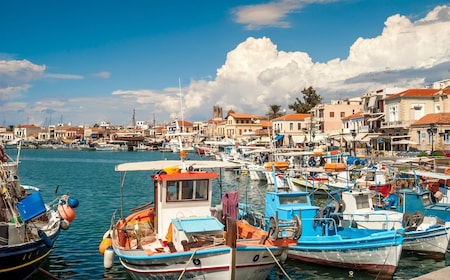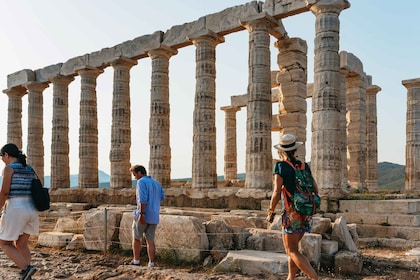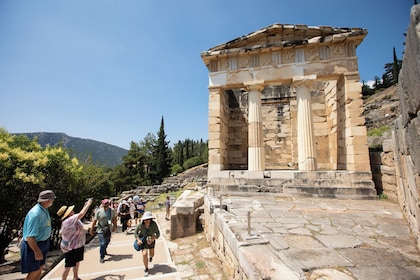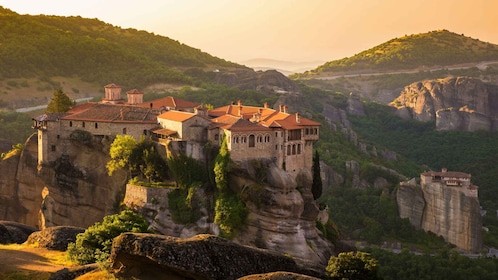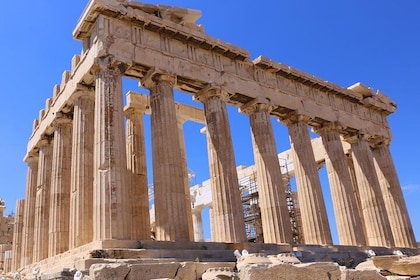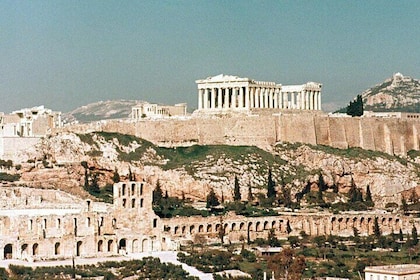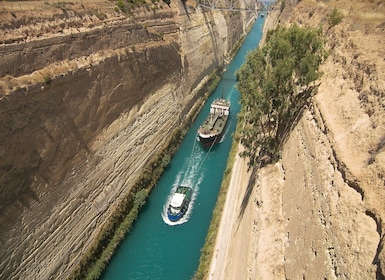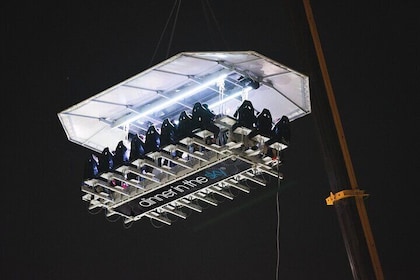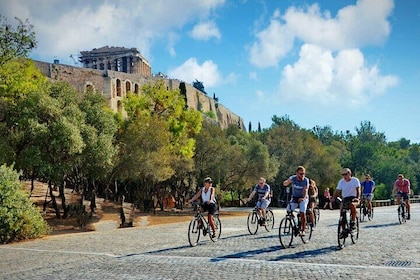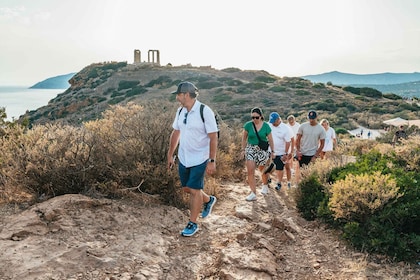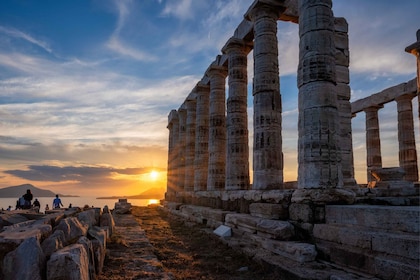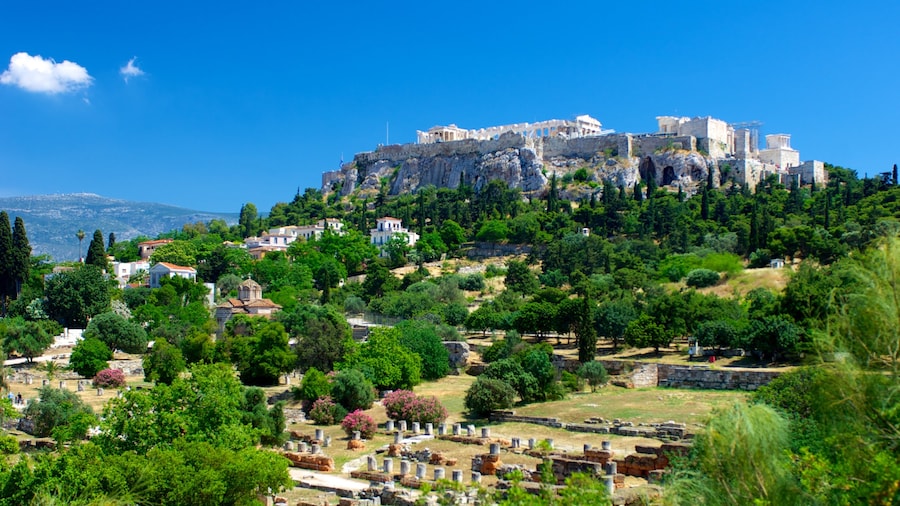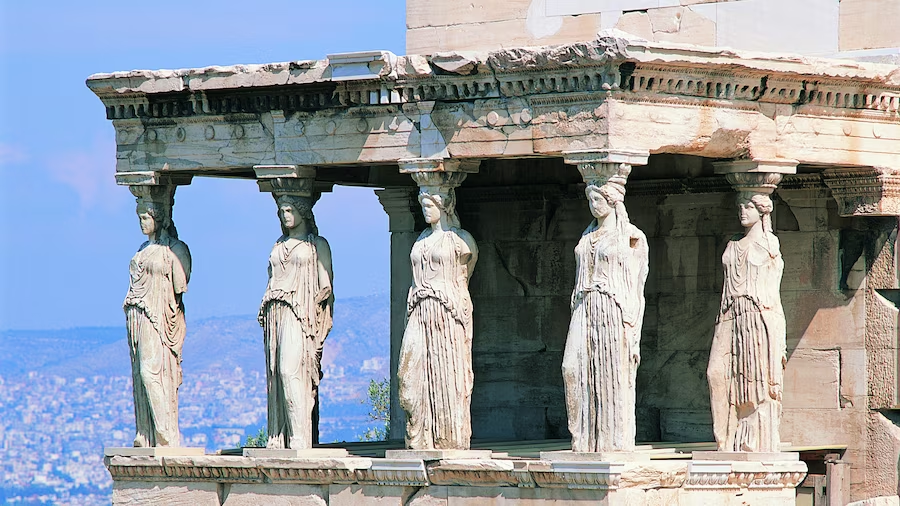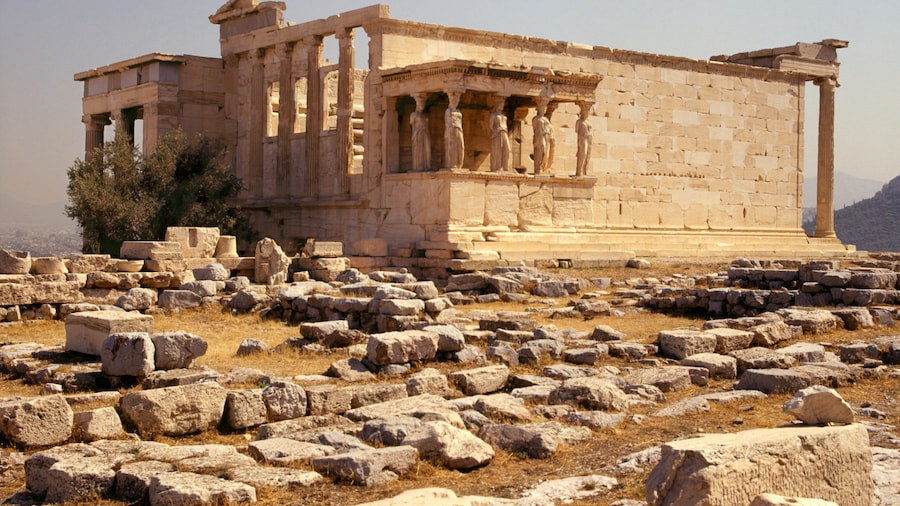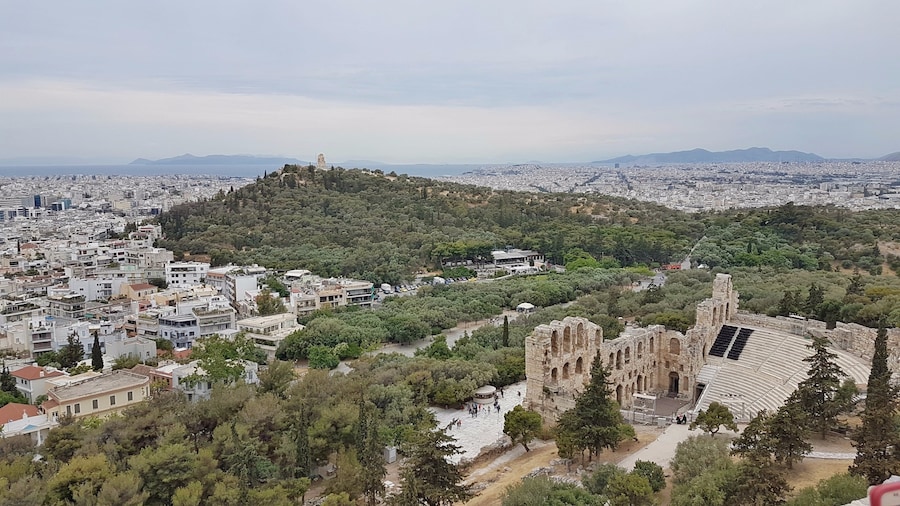Step back in time and explore the ancient myths etched into the walls of the largest Doric temple in Greece, originally dedicated to the warrior goddess Athena.
The Parthenon, the most famous structure at the Acropolis, was completed in 438 B.C. and is a striking example of ancient Greek architecture. Over the centuries, this symbol of strength has survived the rise and fall of civilizations, wars and modern development and today is a source of great pride for the country. Tourists from around the world come to photograph, paint and just gaze in wonder at the Doric columns, statues and detailed reliefs carved into the white marble.
This ancient Athenian temple has gone through many reincarnations over the past 2,500 years. It’s been a treasury, a storehouse for ammunition and an army barracks. While many of the statues and friezes are now in museums, anyone appreciating history and art will still find plenty to admire for at least an hour. Note that there’s long-term renovation underway, and some views may be obstructed by scaffolding.
Learn of the great stories etched into these historic marble walls. The east pediment depicts the birth of Athena from the head of her father, Zeus, the father of all gods in Greek mythology. The west pediment tells of a great battle between Athena and Poseidon. The goddess is depicted holding an olive tree while the mighty god of the sea raises his trident.
Refreshments are available at the park outside the Acropolis, but it’s more cost-effective to bring snacks and water from a nearby store. If you would like some help interpreting what you see, head over near the ticket booth and hire a guide. Alternatively, grab a guidebook and take the self-guided option.
The Parthenon is part of the Acropolis complex in the city centre and is accessible by public transportation. Admission is covered in the cost of entry to the Acropolis, and the site is open daily. In summer avoid the heat and get there early.
